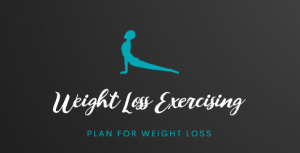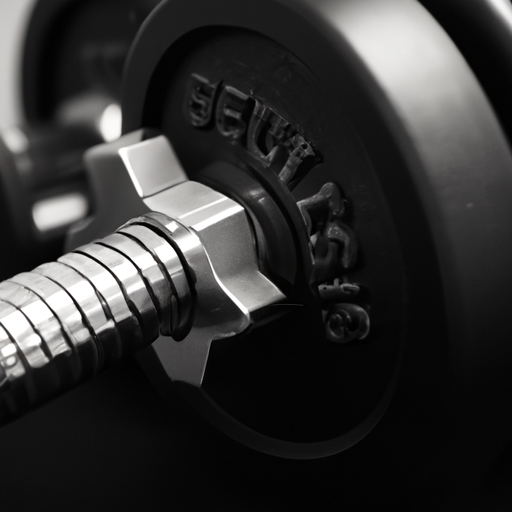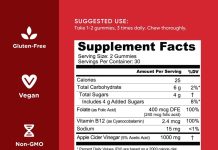Looking to achieve a toned physique but don’t want to end up looking like the Hulk? We’ve got you covered! In this article, we’ll explore effective ways to get toned without bulking up. Whether you’re a beginner or an experienced fitness enthusiast, we’ll provide you with practical tips and strategies to help you achieve your desired level of muscle definition while maintaining a sleek and sculpted look. Get ready to embrace your inner fitness guru as we guide you through this exciting journey towards a toned and healthy body.
Review contents
Understanding the Concept of ‘Toning’
Defining Toning
When it comes to fitness goals, toning is a term that is commonly used to describe achieving a lean and sculpted physique. However, there is often confusion about what toning really means. Toning refers to the process of building muscle and reducing body fat to create definition and shape in the body. It involves a combination of proper nutrition, targeted exercises, and a consistent workout routine.
Myths and Misconceptions
There are numerous myths and misconceptions surrounding the concept of toning that need to be addressed. One common myth is that lifting weights will make women bulk up and look masculine. This is far from true. Women naturally have lower levels of testosterone, the hormone responsible for muscle growth, which makes it much more difficult for them to bulk up like men. Another myth is the idea of spot reduction, which suggests that focusing on specific areas of the body with exercises will result in fat loss in those areas. Unfortunately, spot reduction is not possible, and fat loss occurs throughout the body as a whole.
Importance of Nutrition for Toning
Balanced Macronutrients
Nutrition plays a vital role in achieving a toned physique. A balanced diet that includes the right proportions of macronutrients is essential. Macronutrients consist of carbohydrates, proteins, and fats. Each macronutrient serves a specific purpose in the body. Carbohydrates provide energy for workouts, proteins help in muscle repair and growth, and healthy fats support hormone production and overall health. Balancing these macronutrients in the diet is crucial for optimal results.
Caloric Deficit for Fat Loss
To achieve a toned physique, it is important to reduce body fat. This can be achieved through creating a caloric deficit. A caloric deficit occurs when you consume fewer calories than your body needs to maintain its current weight. This deficit forces the body to utilize stored fat as an energy source. It is important to create a modest deficit to prevent muscle loss and ensure sustainable fat loss over time.
Importance of Protein
Protein is often referred to as the building block of muscle. Consuming an adequate amount of protein is crucial for toning. Protein repairs and rebuilds muscle tissues that have been broken down during workouts, promoting muscle growth and preventing muscle loss. It is recommended to consume a serving of protein with each meal, including lean sources such as chicken, fish, tofu, and beans.
Hydration
While often overlooked, hydration is an important aspect of toning. Staying properly hydrated aids in digestion, nutrient absorption, and overall performance during workouts. Water is essential for transporting nutrients to the muscles and removing waste products. It is recommended to drink at least 8 cups (64 ounces) of water per day, and even more if engaging in intense physical activity.
Choosing the Right Workout Routine
Resistance Training vs. Cardio
When it comes to toning, both resistance training and cardio exercise have their merits. Resistance training involves using weights or resistance bands to build strength and muscle, while cardio exercises focus on increasing cardiovascular fitness and burning calories. It is important to strike a balance between the two to achieve the desired toning results. Incorporating both types of exercise into your routine will help you burn fat, build muscle, and improve overall body composition.
Benefits of Resistance Training
Resistance training is particularly effective for toning as it helps to build lean muscle mass and increase metabolism. Unlike cardio exercises, which primarily burn calories during the activity, resistance training continues to burn calories even after the workout is complete. Additionally, building muscle through resistance training creates definition and shape in the body, giving the appearance of a lean and sculpted physique.
Avoiding Heavy Weights
Contrary to popular belief, heavy weights are not necessary for toning. Using moderate weights with higher repetitions is more effective in building lean muscle and creating definition. Heavyweights may increase muscle size, which is not the desired outcome for toning. It is important to choose weights that are challenging but manageable, allowing for proper form and technique during each exercise.
Incorporating High-Intensity Interval Training (HIIT)
High-Intensity Interval Training, commonly known as HIIT, is a powerful tool for toning. HIIT involves short bursts of intense exercise followed by periods of rest or low-intensity activity. This type of training challenges the body’s cardiovascular system and boosts metabolism, resulting in increased fat burning and improved overall fitness. Incorporating HIIT workouts into your routine can help accelerate the toning process and provide a welcomed variety to your workouts.
Benefits of HIIT
HIIT offers several benefits that make it an excellent choice for toning. Firstly, it helps to burn more calories in a shorter amount of time compared to traditional cardio workouts. Additionally, HIIT workouts have been shown to preserve lean muscle mass while burning fat, making it ideal for achieving a toned physique. Lastly, HIIT can be adapted to suit various fitness levels and can be performed with minimal equipment, making it accessible and convenient.
Effective Exercises for Toning
Compound Exercises
Compound exercises are multi-joint movements that engage multiple muscle groups simultaneously. These exercises are key in toning as they require greater effort and energy expenditure, resulting in a higher calorie burn. Examples of compound exercises include squats, lunges, deadlifts, bench presses, and pull-ups. Incorporating these exercises into your workout routine will help you build overall strength and tone multiple muscle groups at once.
Isolation Exercises
While compound exercises target multiple muscle groups, isolation exercises focus on specific muscles. These exercises are useful for targeting smaller muscles or areas that need extra attention for toning purposes. Some examples of isolation exercises include bicep curls, tricep extensions, calf raises, and lateral raises. Including isolation exercises in your routine allows you to address specific areas of the body and achieve a more balanced and sculpted look.
Bodyweight Exercises
Bodyweight exercises are a fantastic option for toning, as they require minimal to no equipment and can be done anywhere. These exercises use the weight of your own body as resistance to build strength and muscle tone. Examples of bodyweight exercises include push-ups, squats, lunges, planks, and burpees. Incorporating bodyweight exercises into your routine not only helps with toning but also promotes functional strength and flexibility.
Core Strengthening Exercises
A strong core is essential for overall body strength and stability. Core strengthening exercises help to tone and define the abdominal muscles, obliques, and lower back. Planks, Russian twists, bicycle crunches, and leg raises are excellent examples of core strengthening exercises. Including these exercises in your toning routine will not only help you achieve a defined midsection but also improve posture and reduce the risk of injury.
Designing a Toning Workout Plan
Customizing Your Plan
Designing a toning workout plan should take into consideration your current fitness level, goals, and preferences. It is essential to choose exercises that you enjoy and will stick to in the long run. A mix of resistance training, cardio, and flexibility exercises should be incorporated to achieve a well-rounded routine. Consulting with a fitness professional or personal trainer can be beneficial in designing a customized plan that suits your specific needs and goals.
Frequency and Duration
To effectively tone your body, consistency is the key. Aim for at least three to five days of exercise per week, with each workout lasting around 45 minutes to an hour. This timeframe allows for an adequate amount of time to incorporate both resistance training and cardio exercises. Remember, quality over quantity is important, so focus on maintaining proper form and technique during each workout.
Progressive Overload
To continue making progress in your toning journey, it is important to implement the principle of progressive overload. Progressive overload involves gradually increasing the intensity or difficulty of your workouts over time. This can be done by adding more weight, increasing repetitions or sets, or reducing rest periods between exercises. By consistently challenging your muscles, you will stimulate growth and see noticeable improvements in muscle tone.
Rest and Recovery
While exercise is essential for toning, rest and recovery are equally important. Allow your body time to repair and rebuild by incorporating rest days into your workout plan. This will help prevent overtraining and potential injuries. It is also beneficial to include active recovery days, such as gentle stretching or low-intensity activities like walking or yoga, to promote circulation and flexibility.
Tracking Progress and Setting Realistic Goals
Keeping a Workout Journal
Tracking your progress is a crucial part of any fitness journey. Keeping a workout journal allows you to monitor your exercises, sets, repetitions, and weights used. This information helps you track your progress over time and identify areas where you can push yourself further. Additionally, a workout journal can serve as a source of motivation and accountability.
Measuring Body Composition
Beyond just tracking weight, measuring your body composition provides a more accurate representation of your progress during toning. Body composition takes into account the percentage of body fat, muscle mass, and overall body shape. Methods such as skinfold calipers, body impedance analysis, or DEXA scans can be used to measure body composition. Regular measurements can help determine if you are effectively losing fat and gaining muscle, even if the scale doesn’t show significant changes.
Setting SMART Goals
When setting goals for toning, it is important to make them SMART – Specific, Measurable, Attainable, Relevant, and Time-bound. Specific goals provide clarity on what you want to achieve, while measurable goals allow you to track progress. Ensuring your goals are attainable and relevant to your overall fitness journey is key. Lastly, setting a timeframe for reaching your goals provides motivation and helps you stay focused.
Staying Consistent and Motivated
Finding an Accountability Partner
Staying consistent and motivated can be challenging, especially when faced with obstacles or setbacks. Finding an accountability partner can greatly help in staying on track. This can be a workout buddy, a friend, or a family member who shares similar fitness goals. They can provide support, encouragement, and help hold you accountable for sticking to your toning routine. Together, you can celebrate milestones and push each other to achieve success.
Rewarding Yourself
Rewarding yourself for achieving milestones is a great way to stay motivated throughout your toning journey. Set small, achievable goals and celebrate them with non-food-related rewards. Treat yourself to a massage, a new workout outfit, or a relaxing day at the spa. These rewards will not only serve as positive reinforcement but also help maintain your enthusiasm for continued progress.
Variety in Workouts
To prevent boredom and plateaus, it is important to incorporate variety into your workouts. Trying new exercises, exploring different workout formats, or participating in group fitness classes can keep your routine exciting and enjoyable. Additionally, varying the intensity and duration of your workouts can help challenge your body and maximize results. Remember, fitness should be fun, and variety is the spice of life!
Avoiding Common Mistakes
Overtraining
One common mistake is overtraining, which occurs when you push your body beyond its limits without allowing proper rest and recovery. Overtraining can lead to a lack of progress, increased risk of injury, and burnout. Listen to your body, prioritize rest days, and avoid excessive workouts to prevent overtraining and ensure continued progress in your toning journey.
Neglecting Proper Form
Proper form is essential for effective and safe workouts. Neglecting proper form can lead to injuries and reduced results. Take the time to learn and practice correct techniques for each exercise, and if needed, seek guidance from a trained professional. Paying attention to your body’s alignment, breathing, and range of motion will not only help with toning but also prevent unnecessary strain on your muscles and joints.
Skipping Recovery Days
Recovery days are not a luxury but a necessity for achieving optimal results. Skipping recovery days can hinder your progress and increase the risk of overuse injuries. Remember, it is during rest and recovery that your muscles repair and grow stronger. Embrace rest days as an essential part of your toning journey and actively engage in activities that promote relaxation, such as foam rolling, stretching, or gentle yoga.
Undervaluing Sleep
Sleep is often overlooked but plays a crucial role in achieving a toned physique. During sleep, the body undergoes repair and regeneration processes that are vital for muscle growth and recovery. Lack of sleep can negatively impact energy levels, cognitive function, and overall progress in the toning journey. Aim for 7-9 hours of quality sleep each night to maximize your results and feel refreshed for your workouts.
Dispelling Toning Myths
Women and Bulking Up
One common myth surrounding toning is that women will automatically bulk up like men if they engage in resistance training. This is a misconception fueled by the fear of developing bulky muscles. However, women naturally have lower levels of testosterone, a hormone responsible for muscle growth. Building lean muscle through resistance training helps in achieving a toned physique without adding excessive size.
Spot Reduction of Fat
Another myth is the concept of spot reduction when it comes to fat loss. Many people believe that focusing on specific exercises for problem areas, such as targeted abdominal exercises for a flat stomach, will result in fat loss in those areas. Unfortunately, spot reduction is not possible, and fat loss occurs uniformly throughout the body. To achieve a toned appearance, it is essential to focus on overall fat loss through a combination of proper nutrition, regular exercise, and consistency.
Conclusion
Getting toned without bulking up is a realistic and achievable goal for anyone. By understanding the concept of toning, prioritizing nutrition, choosing the right workout routine, and designing a personalized plan, you can successfully sculpt a lean and defined physique. Remember to track your progress, stay consistent, and avoid common mistakes. With determination, patience, and a positive mindset, you can confidently embark on your toning journey and achieve the results you desire.



























